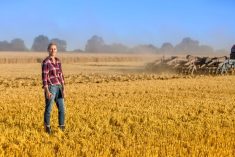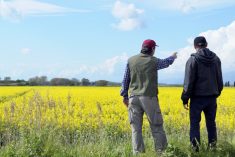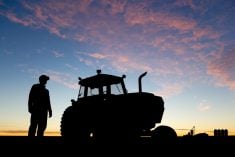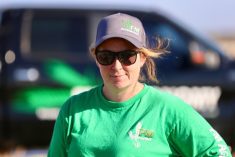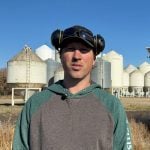Gender bias is complicated.
It can be intentional, but it can also be subconscious or structural, such as when it’s embedded in organizational policies or societal norms.
And it often goes unseen by those who don’t experience it themselves.
Read Also
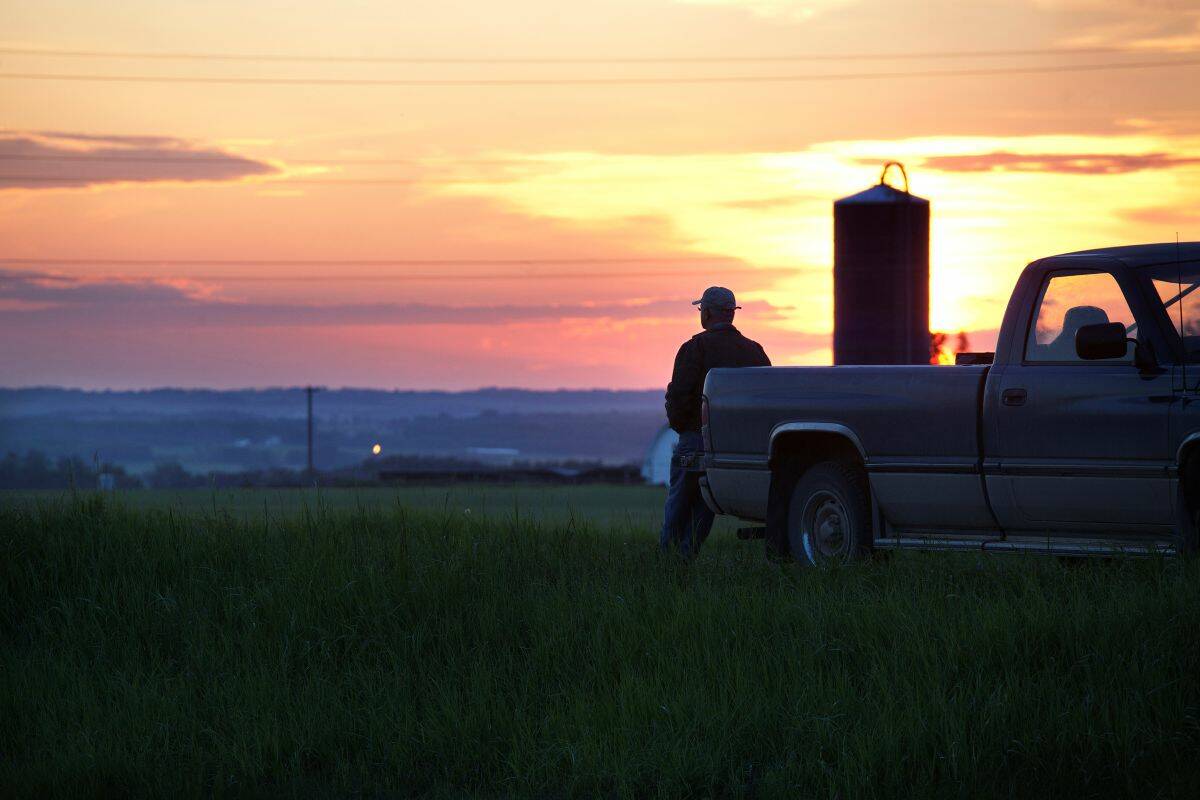
It doesn’t have to be the end for your farm
Options for farmers without successors to pass on the farm.
Although the number of women working in leadership positions in agriculture is increasing, women are still in the minority and continue to experience gender bias, according to a recent survey by the Canadian Agricultural and Human Resources Council (CAHRC).
In their 2025 survey of agricultural leaders, 40 per cent of the 431 female respondents said that they believed there were barriers to women advancing in agriculture but only 6 per cent of men believed barriers exist. (Women in their twenties and thirties were more likely to report barriers than the average; the proportion of women reporting barriers tended to decrease with age.)
The challenges women reported: breaking into the old boys’ club (81 per cent of female respondents), preconceived perception of capability by co-workers and senior management (74 per cent), and balancing careers and family responsibilities (73 per cent).
“The difference in responses to this question between women and men is stark and consistent with the 2015 research,” write the authors of the report.
Survey participants also expressed concerns that “rampant sexual harassment” from men in the agriculture industry is driving young women away.
Viktoria Schuler, a senior manager at CAHRC, provided some examples of the double standards women face.
On the one hand, women are told they can’t lead because they are “too soft” but if they are firm, they are accused of being too aggressive.
And if a woman asks for time off to handle a family matter she can be judged as not being 100 per cent dedicated to her position; however, when a man asks for time off for a family situation, he is often praised as being a good father.
Delineating family and farm roles can be especially hard for women working in a multi-generation family operation.
Despite the inherent challenges of working in a historically male-dominated field, Schuler says women are finding ways to lead with authenticity. For example, they are recognized for frequently possessing positive leadership traits such as higher emotional intelligence, more empathy and a more collaborative communication style. “Their teams benefit when they use these traits,” she says.
CAHRC’s survey also shows that women leaders tend to be highly educated and seek out opportunities to learn and build on their knowledge and leadership skills.
One such learning opportunity is a 10-week leadership development program for women offered by CAHRC. Country Guide reached out to three women who participated in the program earlier this year.
Emily Seed is the executive director at the Northern Ontario Innovation Alliance and a partner at a small, local direct-to-consumer beef farm. Terrilynn Holloway of Wolfville, N.S., worked in a management role at a large poultry operation. Courtney Heuston works in HR and safety at Barrhill Feeders Inc. in Picture Butte, Alta., and is also a partner with her father in a cow-calf ranch where she grew up in southern Saskatchewan.
Here’s what they had to say about the program and their advice for other women in agriculture on how to lead with confidence.
Seek out support
The opportunity during the course to learn from real life examples and to hear how other women navigated roadblocks was extremely useful, says Heuston. “It was the thing I didn’t know I needed.
All three valued the course format, which included opportunities for networking and time to discuss real life situations with other participants in similar circumstances. They were also able to connect with participants on an ongoing basis following program completion. “It helps to know that others are in the same boat, so you don’t feel so alone,” says Holloway.
Seed participated in the course just after her maternity leave. She found it was especially helpful to sharpen her leadership skills as she returned to work. She is passionate about what she does but as an introvert, she doesn’t love public speaking and “had to work to put herself out there again,” she says.
The value of mentoring
Both Heuston and Seed emphasize the value of mentorships in leadership development. Seed says she has benefited from mentoring by strong women in leadership roles in the past through both 4-H and the Canadian Cattle Young Leaders program.
Heuston says, “Mentorship goes a long way. We all have something we can learn or teach. I try to be supportive to other women in my circles. Every little bit helps.”
Be your own cheerleader
Seed says she must work to overcome impostor syndrome, those feelings of self-doubt about skills, talents or accomplishments despite evidence of success to the contrary. “I remind myself that I do have the abilities, and I have people I can reach out to for support.
Holloway’s advice is to trust yourself. “If you feel confident in what you know, don’t second-guess yourself. Don’t let others sway you. Set boundaries.”
Heuston says being in alignment with her goals helps her cope when impostor syndrome rears its head. She recommends being your own cheerleader and using positive self-talk to give yourself a boost of confidence when you second-guess yourself.
She adds that listening to podcasts that bolster her confidence (such as Authentically Ashlyn) or challenge her to think outside the box (Discover Ag) also helps her overcome the critical voice in her head.
But she admits “you have to be thick-skinned and roll with the punches. There will be hurdles. Don’t give up on yourself and don’t stay down too long.”
Ask for feedback
In Holloway’s experience, asking for feedback, good and bad, from someone you trust, either above you in the chain of command or your team members, helps you grow. “If I did something and it didn’t work quite the way I’d hoped, I’d ask others how they thought it went and if there’s something I could have done differently.”
Sometimes we can be our own worst critic, but Holloway says that gathering feedback builds your confidence. “It’s also a way to build trust with your team members who are going through the hardships with you.”
How to develop leadership presence
Lauren Sergy, an Edmonton, Alta., communications and executive coach, says it’s human nature to be biased when someone in a leadership position doesn’t look or sound like what we’re expecting — which, in agriculture, has typically been a white male.
“It’s the way our brains are wired. Even before people hear us speak, they are deciding whether they should listen to us, whether the information we are going to share is reliable and if they should trust us,” she says.
“Even if we don’t want to be biased, we’re making judgements and evaluations. We have to mentally think our way around it. It takes stepping outside ourselves for a moment.”
Sergy acknowledges that it’s frustrating to still be talking about gender and race. “We have to recognize those elements of human bias and we have to work with them strategically. The longer we work with it, the more we work strategically, the easier it gets. But we’re not there yet. Good people can still be unconsciously biased.”
She works with both men and women to help them learn to project an air of confidence and trust, what she refers to as leadership presence. While leadership presence may come more naturally to some people than others, it’s a trait anyone can develop.
Leadership presence is valuable no matter what stage of your career although Sergy says the vibe you give off will change as you progress through professional phases. When you are young, for example, she says your leadership presence may be more energetic and ambitious but when you are older it may be more reflective and philosophical.
Sergy offers the following advice for developing leadership presence:
- Develop self-awareness and self-control. Remain in control of yourself. You do not need to be a robot but show the right emotion at the right time.
- Look confident. Are you presenting the external appearance you intend? Stand tall with an upright posture and make eye contact. (This is generally true for North American cultures but may not apply to other cultures.) If you are a fast talker, consciously slow down.
- Listen more than you talk. Listening instills trust. When leaders listen to us, we tend to assume they are smarter although Sergy acknowledges this does take self-control.
- Accept and embrace impostor syndrome as part of being human. “I don’t know any high-achieving leader, male or female, who doesn’t express this. Learn to dance with it.” Her advice is to write an objective list of skills and career path highlights. “Ask others and take what they are telling you. You have the evidence in the list.”
Resources
The Canadian Agricultural Human Resource Council (CAHRC) runs the Women in Agriculture Essential Leadership Skills Development Program and has plans to launch a platform so women leaders in agriculture can network with one another.
Advancing Women in Agriculture Conferences (AWC) aim to build confidence in women working in agriculture and food. AWC EAST 2025 will take place November 23-25, 2025, at the Sheraton Fallsview, Niagara Falls, Ont., AWC WEST 2026 will take place March 8-10, 2026, at the Hyatt Regency, Calgary, Alta. Visit advancingwomenconference.ca for more information.






